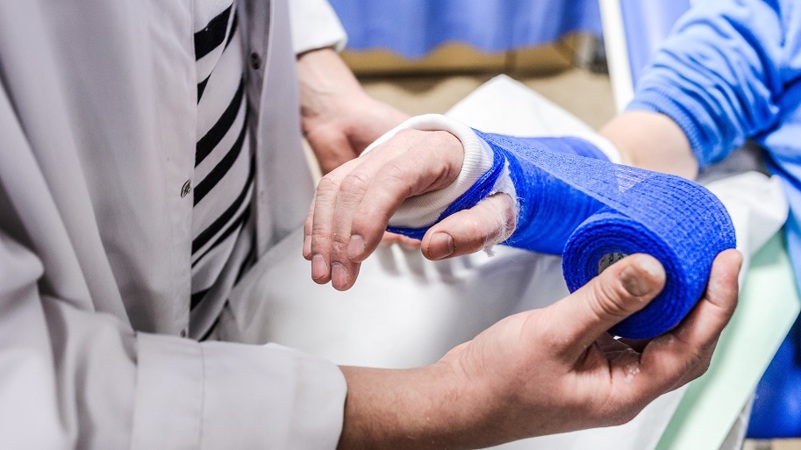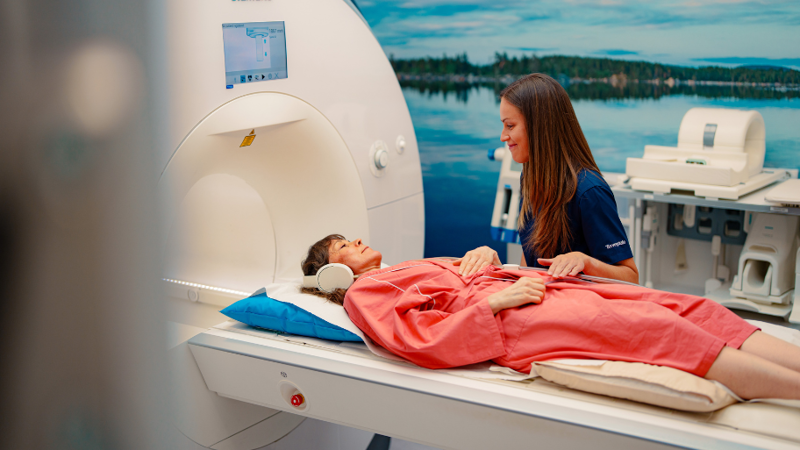Quick referral to occupational health services after an accident supports the return to work
For years, Finnish organizations have systematically worked towards preventing accidents. The statistics of Terveystalo show that accidents as a cause of absences has decreased every year, and in 2022, the absences related to occupational accidents treated at Terveystalo was 9% lower than in 2021. The number of accidents has not decreased as substantially because accidents also occur in remote work but cannot, in most cases, be considered occupational accidents. In the event of an accident, it is important to ensure that the patient is referred to occupational health services after acute treatment in order to assess their ability to work and draw up a return to work plan.

In occupational health, the frequency of accidents is proactively minimized with the workplace survey that also pays attention to first aid preparedness.
“It all starts with a workplace visit that comprehensively maps out the risks of the working environment. Especially in physical working environments, an occupational physical therapist as an occupational health professional can take on the main role in the workplace survey in order to optimally analyze accident-prone tasks and work phases that cause aches and pains,” says Anita Riipinen, Chief Occupational Health Physician at Terveystalo.
First aid preparedness and the required number of people who know how to administer first aid are also evaluated during the visit.
“There are different types of working environments, and the workplace survey assesses how first aid is organized based on the nature and circumstances of the work. Typically, first aid training is agreed upon in connection with the survey, so that there are enough staff with first aid skills on site in each shift. Even though the goal is that the skills never need to be used, they are regularly practiced in the trainings so that the activities can run routinely when needed,” Riipinen says.
Accidents in remote work
As hybrid work has become more common, the personnel should be informed that the occupational accident protection is less extensive in remote work than in in-office work. An employee can only receive compensation for an accident that has occurred in remote work if the accident occurs during work or in activities directly related to work.
“In remote work, many things that would have been covered in the event of an accident at the workplace are excluded from accident protection. For example, slipping in remote work is not usually considered to be an occupational accident, unlike slipping on the way to work or at the workplace.”
Pains and aches resulting from movement at work that have occurred over a long period of time but are acutely symptomatic are also not considered accidents.
“If the working position has been unbalanced and straining or getting up causes acute back pain, for example, it is considered pain resulting from movement at work. In this case, a direct appointment with a physical therapist is the best way to find help,” says Riipinen.
Restoring working capacity with the right care
In the event of an accident, it is important to seek the right kind of treatment quickly. Terveystalo's Emergency Services operate in the largest cities and are open from morning to night. There are always professionals experienced in treating injuries who can also provide plaster casts or splints, if necessary.
“If the injury does not require immediate treatment, you can book an appointment with a specialist for the next day to have the injury examined and the patient referred to the correct care pathway. At Terveystalo, general practitioners and occupational health physicians can also consult specialists in the event of an accident, as a result of which our clinic network is able to extensively treat injuries caused by accidents,” says Riipinen.
The rehabilitation of the injury continues in physical therapy, ensuring the best possible recovery. In initial calculations made in The TYÖOTE project of the Finnish Institute of Occupational Health, referring a patient who has suffered an accident to occupational health services after acute treatment reduces absences and speeds up the return to work. When the treatment of the injury starts at Terveystalo, information flows seamlessly to occupational health.
“The ability to work is monitored in occupational health services where the professional assess in more detail the possibilities for lightened/replacement work. If the absence is prolonged, a work ability negotiation is held and, if necessary, other support means for returning to work are also considered together with the work ability coach.”
Keep your insurance information up-to-date
Terveystalo delivers the information of the accident to the insurance company for the settlement of claims. We recommend checking the organization’s insurance information from time to time to ensure that claims handling can be carried out promptly in the event of an accident. You can check your organization's accident insurance information in Terveystalo's Suunta service under “Occupational health cooperation, Contact information”. If you have changed insurance companies or your insurance number has changed, please inform your occupational health team.
Read more Occupational Health articles

Terveystalo's digital services have been awarded the internationally recognized ISO27001 information security certification.
Terveystalo's information security practices, processes, and risk management are in line with international best practices.

Does massage help relieve stress? – Touch restores and calms the body and mind
Stress is not always visible on the outside, but the body does show signs when the strain increases. According to Lassi Ylönen, a trained massage therapist at Terveystalo Rela, the body often communicates stress through subtle signs.

Circular economy and artificial intelligence boost performance and improve care
At the heart of sustainable healthcare, technology serves as a tool for improving both the quality of care and accountability. Terveystalo favors solutions that combine sustainability, cost-effectiveness, and medical expertise.

Psychologist: How to make Christmas a relaxed and personal celebration
For many, the anticipation of Christmas begins when cities are decked out in seasonal lights and the first chocolates, calendars, and gingerbread cookies appear on store shelves. Christmas carols ring out and the Tonttuparaati choir sings “Kiire jo on! Kiire jo on!” (Hurry up! Hurry up!). This warm and atmospheric celebration also brings other feelings to mind: how on earth can we get through all this without losing our joy and peace in the rush?

Terveystalo and Gosta Labs deepen their cooperation: the goal is to streamline work with a superior patient information system
Terveystalo is deepening its cooperation with Finnish health technology company Gosta Labs and investing €1 million in the company as a minority investor. The aim is to jointly develop artificial intelligence solutions that improve the quality of care and the efficiency of reception work as part of Terveystalo's new patient information system, Terveystalo Ella.

First aid preparedness in companies requires action and courage
First aid skills increase resilience, but a barometer survey of Finnish organizations' first aid capabilities published in October reveals that the number of trained personnel is alarmingly low.